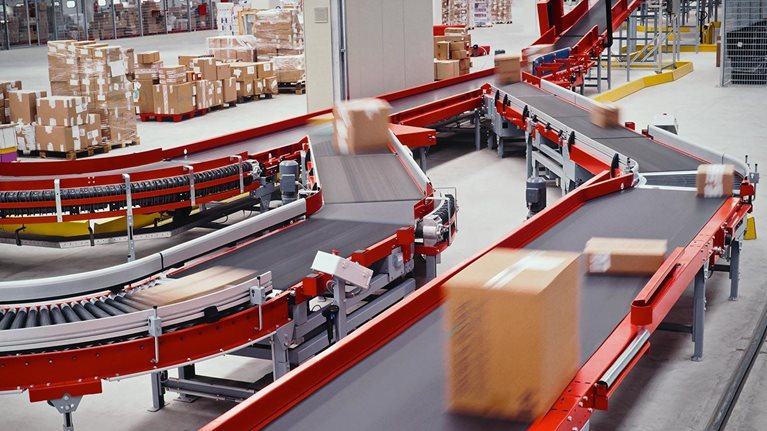Nearly 30 years ago, economists Robert Solow and Stephen Roach caused a stir when (independently) they pointed out that, for all the billions of dollars invested in information technology, there was no evidence of a payoff in productivity data. It was 1987 and businesses were buying tens of millions of PCs every year. Microsoft had just gone public, netting Bill Gates his first billion. But, the economists declared, this tech emperor had no clothes: while IT investments were accelerating, US productivity growth had slowed.
Today, we could be in for another Solow moment, courtesy of the Internet of Things. This tech revolution involves bringing the physical world into the digital domain with sensors, tags, and other gadgets. Suddenly, thanks to low-cost sensors, computers on the Internet can control machines on the factory floor, ships at sea, and cars and trucks—or monitor the condition of goods in transit, human beings, crops, and farm animals. The physical world can now be monitored, measured, and optimized. The possibilities seem endless, which is why the predictions have become so extravagant. A year ago, Gartner declared that the Internet of Things (IoT) had reached the peak of hype. Can a backlash be far behind?
When the IoT backlash comes, it will be useful to remember what happened to the original productivity paradox. First, recall that it was largely ignored by the businesses that were seeing improvements in the quality and speed of operations and in their decision making. They kept investing, even without the macroeconomic proof. Next, in the late 1990s, economists Erik Brynjolfsson and Lorin Hitt refuted the productivity paradox premise. They found problems with measures of service-sector productivity and, more importantly, long lags between when technology investments were made and when productivity gains appeared, because of organizational issues.
Our own research at the time—under the watchful eye of Robert Solow, one of our academic advisors— found that the big jump in productivity in the late 1990s was driven largely by IT-enabled efficiencies in several larger sectors with high competitive intensity, including retail, wholesale trade, financial services, and the IT industry itself. Importantly, the greatest productivity gains were not driven by IT alone, but when IT investments were combined with process changes, and organizational and managerial innovations.
We have been working on the Internet of Things for more than five years. Our latest research, The Internet of Things: Mapping value beyond the hype, reveals important parallels to the 1980s which suggests that the productivity paradox could make a comeback. And, just as in the 1980s, individual companies that are taking the lead and making organizational and operational changes to get the greatest benefits from IoT technology are seeing results. Just as in the earlier post-Solow Paradox era, it will take time and require broader process and business changes before the results can be detected at the macroeconomic level.
Our research indicates that when those broad impacts from IoT technology do materialize, they have the potential to create even greater economic value than even the hype suggests. This is largely because we view potential value by looking at IoT uses through the lens of settings—physical spaces such as factories, homes, or cities. This provides a richer picture when added to the traditional vertical market view, which looks at how technology is used in particular industry “verticals,” such as autos or appliances. Most importantly, the settings approach shows us how much value can be derived when IoT systems interact with each other and with other IT systems.
Achieving interoperability is a significant systems challenge, involving both technical and operational challenges—coordinating investments, for example—and could delay the IoT productivity payoff. Fully 40 percent of the maximum value that we estimate for the IoT applications we size (worth up to $11 trillion per year in 2025) depends on interoperability. For example, sensors to monitor a car engine can cut maintenance costs and extend a car’s life, but connecting sensors on cars to traffic monitoring systems can cut travel time for thousands of motorists, save energy, and reduce pollution. This will require different technologies and organizations to work together—auto manufacturers, transit operators, and traffic engineers collaborating to work out the connections for traffic-management systems. Even now, some of the most basic building blocks for interoperability are missing: two-thirds of the things that could be connected are not connected on standard Internet Protocol networks, but on other proprietary networks, if they are even connected at all.
Productivity gains from IOT also depend on using data to guide changes in processes or even to develop new business models. Today very little of the data being collected by IoT sensors is being used and what is used is applied in very basic ways—detecting anomalies in the performance of machines, for example. Almost no data is used to optimize processes, make predictions, or inform decision making—the uses that lead to the operating efficiencies and innovations in business models that make a big difference in company performance.
Other barriers also stand in the way of capturing the full potential of IoT. There are long investment cycles in areas such as infrastructure, where it could take many years to retrofit legacy assets for high-impact IoT applications. Then there is the need for privacy and security protections for customer data and regulations to enable IoT applications such as driverless cars. The cybersecurity challenges are particularly vexing, as IoT both increases the opportunities for attack, while it multiples the consequences of a potential breach.
However, we suspect that the biggest hurdles will be organizational, as they were back in the 1980s. So, be prepared to hear about a new productivity paradox. But bear in mind that as with the previous paradox, the companies that master IoT technology early and use it to transform their businesses could reap benefits early and be far ahead of competitors by the time IoT’s contribution are obvious to everyone.
This article originally ran in LinkedIn
